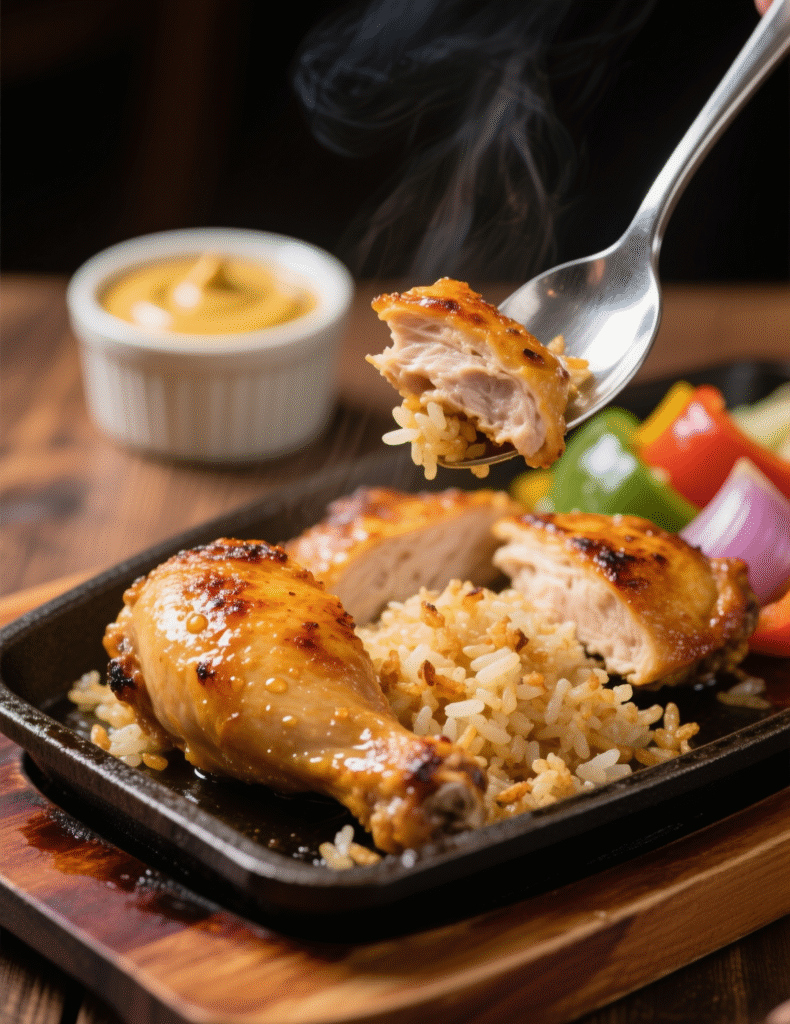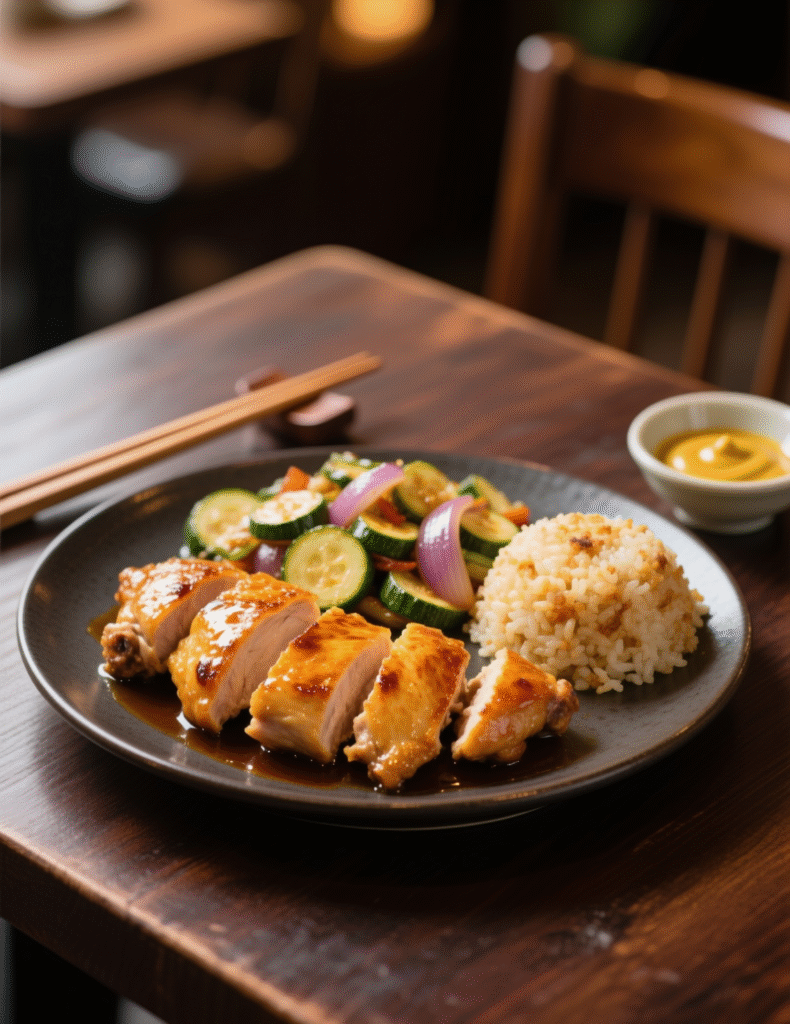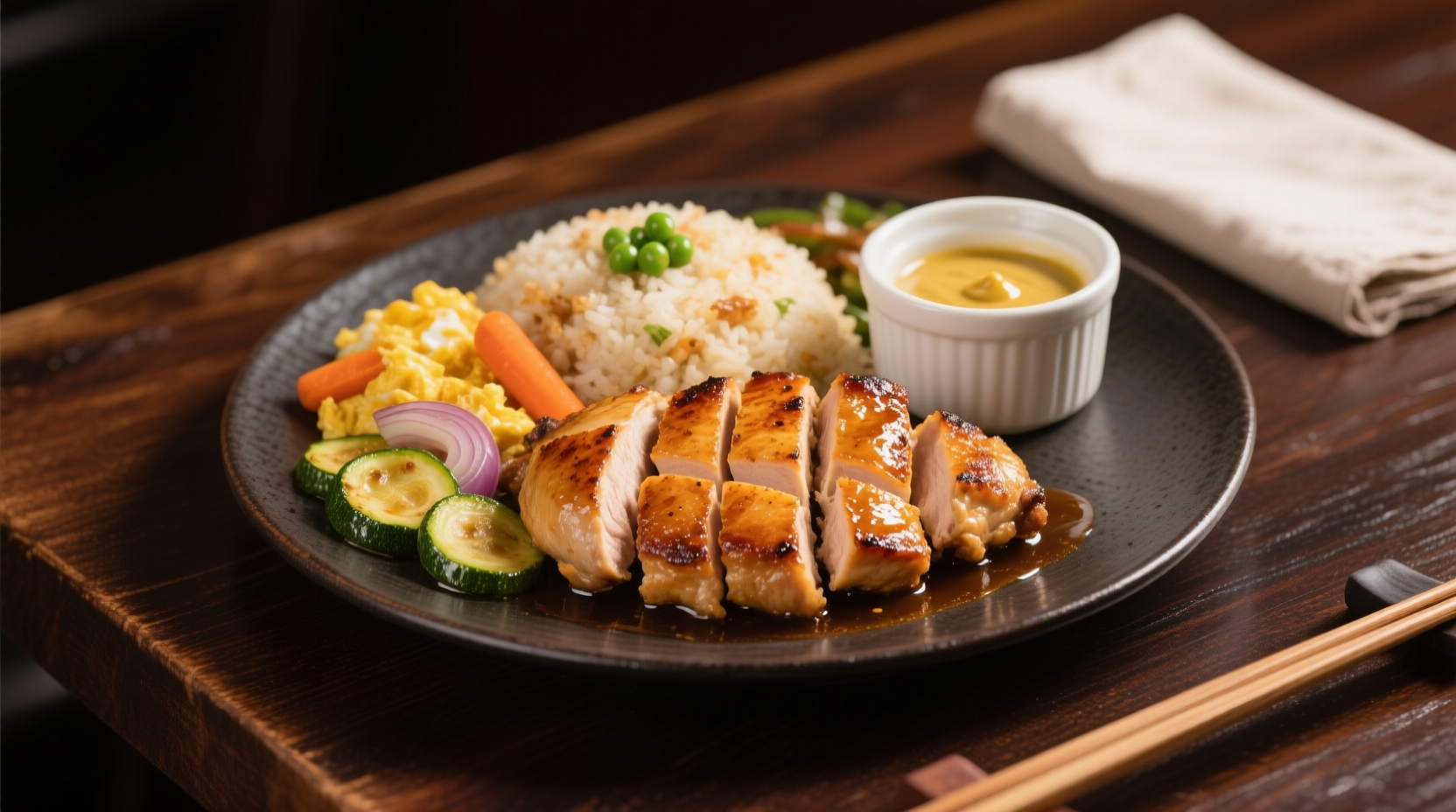You ever sit at Benihana, watching the chef flick a shrimp tail into his hat, and thought, I want that exact chicken on my plate at home? That’s exactly what hibachi chicken recipes try to replicate. But doing it well—like, really well—requires more than tossing chicken in soy sauce. It’s a balance of heat, timing, and a little bit of theater. Today I’m breaking this down not just as a recipe, but as a craft.
What Makes Hibachi Chicken Unique
Hibachi chicken is deceptively simple: chicken breast, butter, garlic, soy sauce, and a splash of lemon. That’s it. But the magic isn’t in the ingredients—it’s in how they’re handled. At Benihana, the chefs cook on massive teppanyaki griddles reaching 450°F or higher. That searing heat locks in juices, caramelizes proteins, and gives that slightly smoky, buttery finish.
Most home cooks fail because they crowd the pan or use the wrong fat. Olive oil burns. Butter alone smokes too fast. The trick is mixing oils—high smoke point oil with butter—so you get flavor without charred bitterness. Professionals know this instinctively, but it’s where the line between home imitation and restaurant precision gets drawn.
A Brief History of Hibachi-Style Cooking
“Hibachi” in Japanese originally referred to a charcoal brazier, a heating tool more than a cooking one. What Americans call “hibachi” is actually teppanyaki. Benihana popularized it in the US in the 1960s by pairing food with performance—knife tricks, onion volcanoes, spinning eggs. The food is delicious, sure, but the experience is what people pay for.
And here’s the odd bit: the chicken dish we call hibachi chicken at Benihana isn’t really Japanese in the traditional sense. It’s an American adaptation built for palates that wanted lean protein, mild seasoning, and lots of sauce on the side. That means when we recreate it, we’re not just making food—we’re reconstructing a hybrid cuisine.
The Core Ingredients and Why They Matter
Professional cooking isn’t about tossing in ingredients blindly; it’s about knowing why each piece is there.
- Chicken breast: Lean, quick to cook, and perfect for searing. But it dries out in seconds. Keeping it juicy is the entire challenge.
- Soy sauce: Aged, fermented umami that builds depth. Low-sodium soy helps prevent oversalting when reducing.
- Butter: Gives richness and a glossy finish. Clarified butter (ghee) can be used for higher heat tolerance.
- Garlic: Pungent, aromatic, but volatile. Burnt garlic will ruin the whole pan, so it needs gentle timing.
- Lemon juice: Cuts through fat, balances salt, and brightens the dish right at the end.
Each ingredient has a role, and when one is mistreated—say, garlic tossed in too early—the whole harmony collapses. That’s what separates a home attempt from a dish that makes you stop mid-bite.

Cooking Method: Professional vs Home Kitchen
A restaurant chef has a flat top that never cools down. At home, you probably have stainless steel, cast iron, or nonstick pans. Here’s where professionals adjust:
- Pan choice: Cast iron mimics flat-top heat retention best. Stainless works, but needs constant control.
- Batch size: Don’t cook more than 2 chicken breasts at once. More meat = temperature drop = steamed chicken, not seared chicken.
- Fat ratio: Half neutral oil, half butter, added in stages. Butter at the start burns. Butter at the end glazes.
This is why professionals don’t just share recipes. They talk about equipment, timing, the muscle memory of flipping chicken at the exact moment it releases from the pan.
The Recipe: Hibachi Chicken (Benihana Copycat)
Ingredients (serves 4)
- 4 boneless, skinless chicken breasts, cut into 1-inch cubes
- 2 tbsp neutral oil (canola, grapeseed, or avocado)
- 2 tbsp unsalted butter, divided
- 3 cloves garlic, minced
- 3 tbsp low-sodium soy sauce
- 1 tbsp mirin (optional, for authentic sweetness)
- 1 tbsp lemon juice, freshly squeezed
- Salt and pepper, to taste
- Chopped green onions, for garnish
Instructions
- Heat a large cast-iron skillet or flat griddle until just below smoking point. You want it screaming hot.
- Add the neutral oil. Immediately toss in the chicken, spreading evenly. Don’t touch for 2 minutes—let it sear.
- Flip once golden. Add half the butter and let it melt into the chicken.
- Add garlic and sauté 30 seconds, no longer.
- Deglaze with soy sauce and mirin. Toss to coat evenly.
- Remove from heat, squeeze lemon juice, and finish with the remaining butter for shine.
- Garnish with scallions. Serve with hibachi rice or noodles.
Pairing Hibachi Chicken with Sauces
Benihana isn’t complete without its sauces. The two classics: ginger sauce and yum yum sauce.
- Ginger sauce: Fresh ginger, soy, vinegar, onion, lemon. It’s sharp, cleansing, cuts through the butter.
- Yum yum sauce: Mayonnaise, ketchup, rice vinegar, paprika. Creamy, tangy, slightly sweet. An American invention but a crowd favorite.
Professionals often find yum yum sauce too heavy for delicate chicken. But in the US, it became synonymous with hibachi dining. The sauces aren’t just condiments—they’re cultural signals.
Nutritional Insights
A standard Benihana hibachi chicken plate clocks in at around 540 calories, with 30g protein, 20g fat, and 45g carbs (with rice). For athletes, it’s a clean protein source, though the butter pushes fat content higher. Professional chefs are now adapting hibachi recipes with avocado oil, brown rice, and reduced-sodium soy for health-conscious diners.
Interestingly, a 2022 survey by Technomic showed 63% of millennials prefer “experience dining” like hibachi, but 48% also want “healthier versions” of restaurant classics. That means this recipe isn’t just nostalgia—it’s relevant for modern, balanced eating.
Common Mistakes When Recreating Hibachi Chicken
I’ve seen even skilled cooks stumble here. The big pitfalls:
- Overcrowding the pan, which steams the chicken.
- Adding garlic too early, causing bitterness.
- Using regular soy sauce without balancing acidity.
- Forgetting the lemon, which sounds optional but transforms the dish.
A professional thinks ahead: “What’s my pan temp after 2 minutes? Do I rest the chicken before tossing with sauce?” These details sound small, but they add up.

Emerging Trends in Hibachi Cooking
Hibachi cooking is being reimagined in modern kitchens. Plant-based hibachi chicken—made from seitan or soy protein—is gaining popularity in vegan restaurants. There’s also a movement toward hibachi “bowls” instead of full teppanyaki tables, catering to fast-casual dining.
At the same time, culinary schools are teaching hibachi technique not just as spectacle, but as a lesson in high-heat control and flavor layering. Chefs are asking: how do you bring teppanyaki artistry into a 12-inch skillet? That question keeps this dish alive outside of Benihana’s walls.
Expert Insights: Beyond the Recipe
The best hibachi chicken isn’t just cooked—it’s performed. Even at home, I tell chefs-in-training: make it a show. Toss the chicken dramatically, squeeze lemon with flair, let the garlic hit the pan and fill the room. Food memory is sensory memory, and hibachi thrives on it.
From a flavor chemistry standpoint, the Maillard reaction happening at 350–450°F is the backbone. The soy amplifies glutamates, butter adds mouth-coating richness, and lemon provides contrast. That triangle—umami, fat, acid—is why people remember hibachi chicken years after eating it.
Conclusion: Why Hibachi Chicken Matters
Hibachi chicken (Benihana style) is more than a copycat recipe. It’s a study in heat control, ingredient balance, and cultural storytelling. The dish proves you don’t need 20 spices to create unforgettable food—you need precision, timing, and respect for the process.
For professionals, mastering hibachi chicken is an exercise in restraint. It teaches that less is more, and that flavor comes not from complexity but from control. For home cooks, it’s a gateway dish that makes weeknight dinners feel like theater.
So the next time you slice chicken for hibachi, don’t just cook it. Perform it. Respect the garlic. Don’t skip the lemon. And remember, the difference between ordinary chicken and Benihana-style hibachi chicken is about 30 seconds of attention.
FAQs
What is hibachi chicken at Benihana?
It’s a simple teppanyaki-style chicken dish cooked on a hot griddle with soy, butter, garlic, and lemon.
Is hibachi the same as teppanyaki?
No, hibachi is a charcoal brazier in Japan, while teppanyaki is flat-top griddle cooking popularized in the US.
What kind of chicken is best for hibachi chicken?
Boneless, skinless chicken breast is most commonly used because it cooks fast and stays lean.
Why does Benihana chicken taste so buttery?
Because chefs use a butter and oil combo, adding butter at the end for a glossy, rich finish.
Can I make hibachi chicken without a flat-top grill?
Yes, a cast-iron skillet works best at home since it retains heat like a restaurant griddle.
What sauces go with hibachi chicken?
The two classics are ginger sauce (sharp and tangy) and yum yum sauce (creamy and slightly sweet).
How do I stop the garlic from burning?
Add garlic near the end of cooking, once the chicken is nearly done, for aroma without bitterness.
Is hibachi chicken healthy?
Yes, it’s high in protein, but the butter makes it rich—using less butter or avocado oil lightens it.
Why do I need lemon juice in hibachi chicken?
Lemon brightens the flavors, cuts through the fat, and balances the salty soy base.
What’s the biggest mistake when cooking hibachi chicken?
Overcrowding the pan, which lowers heat and steams the chicken instead of searing it.

Mariana is a passionate home cook who creates delicious, easy-to-follow recipes for busy people. From energizing breakfasts to satisfying dinners and indulgent desserts, her dishes are designed to fuel both your body and hustle.
When she’s not in the kitchen, she’s exploring new flavors and dreaming up her next recipe to share with the Foodie Hustle community.

